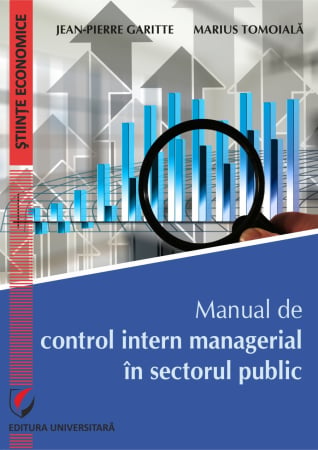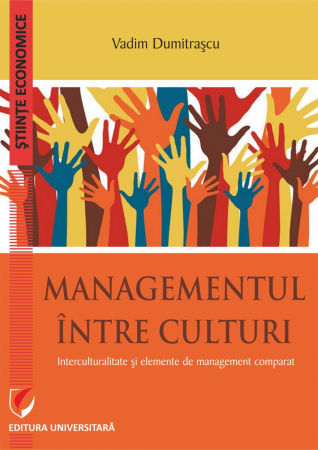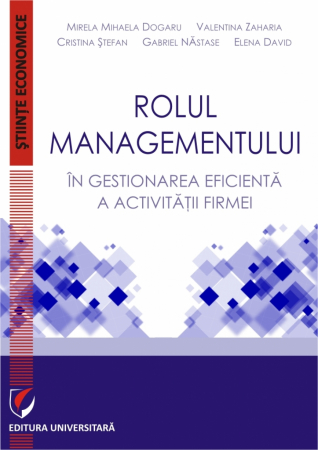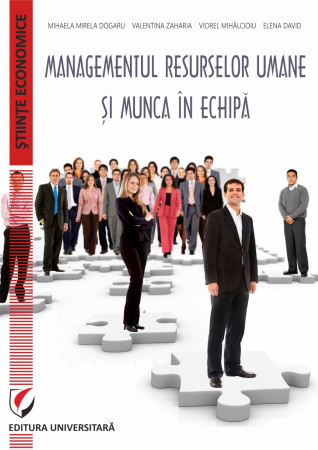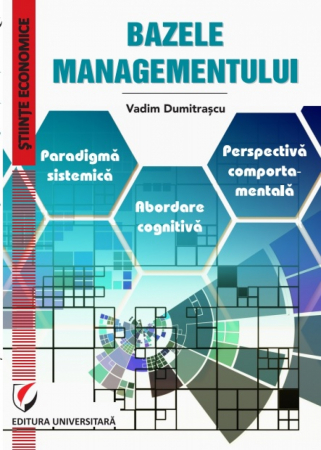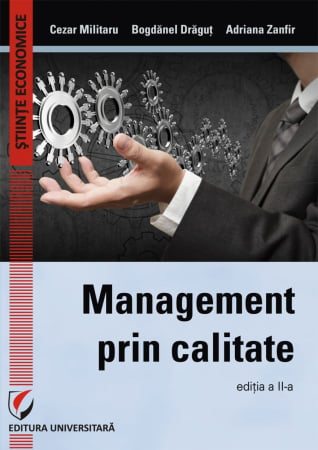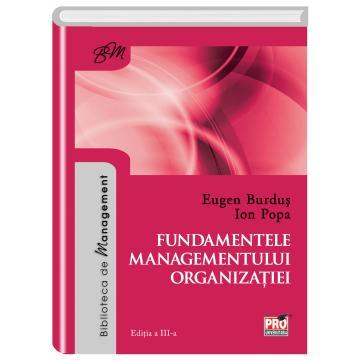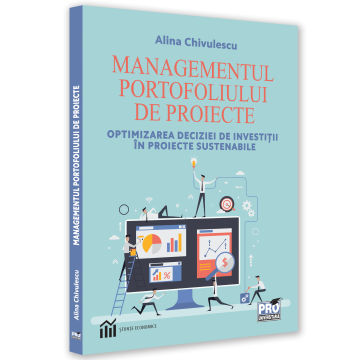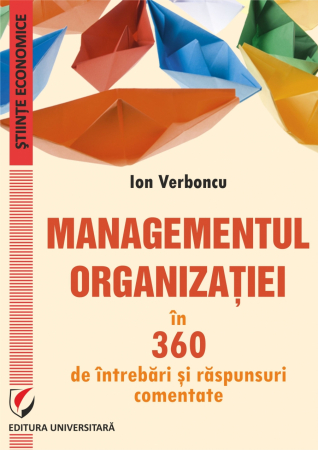Propuneri manuscrise: [email protected]: 0745 204 115
Urmărire comenzi Persoane fizice / Vânzări: 0745 200 357 / Comenzi Persoane juridice: 0721 722 783
6359.png) Management models for the EU inland freight transport industry at the convergence with the knowledge economy and kibs - Amalia-Elena Ion
Management models for the EU inland freight transport industry at the convergence with the knowledge economy and kibs - Amalia-Elena Ion
6359.png)
ISBN: 978-606-28-1341-3
DOI: https://doi.org/10.5682/9786062813413
Anul publicării: 2021
Ediția: I
Pagini: 126
Editura: Editura Universitară
Autor: Amalia-Elena Ion
- Descriere
- Download (1)
- Autori
- Cuprins
- Cuvânt înainte
- Review-uri (0)
The main questions are related to the possibility of bringing innovation into a dull sector, and possibly transforming the way in which business is done today. The research projects around the following ideas: Is the EU freight transport industry transforming into a knowledge intensive activity, or a knowledge intensive service? Will it become a significant part of the knowledge economy? Does the public policy agenda try to shift the gear into this direction? The freight transport sector is intrinsically a secondary demand within the background of economic activity, and it mostly comprises of services – either for shipments and distribution, or for logistics and storage. The current research is mainly focused on the distribution dimension of the freight transport sector, by considering the inland transport modes – road, rail, and inland waterways. The discussion, from its initial stage to its dissolution, revolves around the current status, as well as possible/probable conditions that might arise given changes in the sector. The entirety of the research is, basically, a manuscript of general knowledge, measured responses from the industry (through econometric analyses), and personal inputs on the topic.
From an applicative perspective, the freight transport sector within the European Union refers to all the activities that are performed with the ultimate scope of distributing freight goods from point A to point B in order to feed the economy with final products and/or services. Although theoretically its activities are fundamentally linked to the extensive usage of heavy machinery, the freight transport sector is providing a connectivity service to all the other economic sectors, as Savy and Burnham (2013) describe how transport and industrial capital are inseparable links. The fact that the freight transport is a service brings a conditioning to the overall mechanism (Hedvall et al., 2017), especially at the precipice of innovation and technology, of extensive ICT inclusion, and of widely spread knowledge creation.
Moreover, the book is continuously assessing the management dimension, through the understanding of different impact levels based on types of enterprises involved in the service provision. Since the greater part of the freight transport sector in the EU is carried out by SMEs active in the road freight transport (Eurostat Pocketbooks, 2011), since the modal split heavily relies on the road traffic, and since the public policy attention towards the freight transport is growing, the research will imperatively command and focus on those aspects when dealing with the topic.
The main objective of the research is that of accepting or rejecting the correlation between the inland freight transport sector and the knowledge economy – through adherence to KIA and KIS and unlocking the potential development of the sector through a set of proposed management models.
The first phase of the study is represented by the econometric analysis, based on the hypotheses development, which will determine the degree of adherence of the inland freight transport sector to the key dimensions of the knowledge intensive business services.
The next phase of the research comprises of the drafting of management models for alignment of inland freight transport to KIBS, and the introduction of a recommended action plan. At this point, the perspective focuses on both macro and micro levels, assessing the situation from the business level, through the general economic framework, and at the convergence with innovation and technology.
Finally, the study combines all the previous work into a colossus management model, at the precipice of blockchain technology inclusion, for all the modes of inland freight transport. This part is entirely dedicated to creating a strategic management model, following a vision, mission, and a set of strategic objectives, that will be furthered into action programmes.
The research is meant to uncover significant information on the status of the inland freight transport sector, from a vantage point (macro level), and further into specific spheres of the sector. The main advantage of the research is that of having had hands on experience in the field and being able to forward a strategic perspective into how the sector might look like if it were to become more efficient, transparent, traceable, as well as defined by fair competition, and innovation and technology adoption.
-
Management models for the EU inland freight transport industry at the convergence with the knowledge economy and kibs
Descarcă
1. INTRODUCTION / 9
1.1. PROBLEM STATEMENT / 9
1.2. THEORETICAL BACKGROUND / 10
1.3. THE BEGINNING OF THE RESEARCH AND ITS PURPOSE / 11
1.4. OBJECTIVES AND PHASES OF THE RESEARCH / 13
2. THE KNOWLEDGE ECONOMY AND KNOWLEDGE INTENSIVE SERVICES / 14
2.1. SERVICES AS GROWTH PROPELLER OF THE ECONOMY / 14
2.2. KNOWLEDGE AND ECONOMICS OF MEASUREMENT / 17
2.3. PEOPLE WITHIN THE KNOWLEDGE SYSTEM / 20
2.4. THE MANAGEMENT OF INNOVATION, TECHNOLOGY, AND SOCIAL NETWORKS / 21
2.5. GEOPOLITICS AND ACADEMIA / 23
3. RESEARCH METHODS IN TRANSPORT SERVICES / 28
3.1. BUSINESS AND MANAGEMENT COMPONENTS OF THE FREIGHT TRANSPORT SERVICE / 28
3.2. KEY DIMENSIONS OF KIBS / 40
4. THE ECONOMETRIC MODEL FOR INLAND FREIGHT TRANSPORT SERVICES / 44
4.1. RESEARCH METHOD / 44
4.1.1. General assumptions / 44
4.1.2. Structural model / 46
4.2. ROAD FREIGHT TRANSPORT MODEL / 50
4.2.1. General perspectives / 50
4.2.2. Statistical Hypotheses Development / 51
4.2.3. Research methodology / 52
4.3. RAILWAYS FREIGHT TRANSPORT MODEL / 58
4.3.1. General assumptions and Hypotheses Development / 58
4.3.2. Research methodology / 59
4.4. INLAND WATERWAYS FREIGHT TRANSPORT MODEL / 63
4.4.1. General assumptions and Hypotheses development / 63
4.4.2. Research methodology / 65
5. MANAGEMENT MODELS FOR THE INLAND FREIGHT TRANSPORT SERVICES / 70
5.1. INTERPRETATION AND APPLICATION OF THE RESEARCH’S RESULTS / 70
5.2. PROPOSED MANAGEMENT MODEL FOR ALIGNMENT OF INLAND FREIGHT TRANSPORT TO KIBS / 74
5.2.1. Proposed management model for road freight transport / 74
5.2.2. Proposed model for rail freight transport / 80
5.2.3. Proposed model for IWT freight / 84
5.3. PROPOSED MANAGEMENT MODEL FOR INLAND FREIGHT TRANSPORT WITH FOCUS ON INTEROPERABILITY AND MULTIMODALITY / 88
5.3.1. Strategy formulation for the inland freight transport sector / 89
5.3.2. Strategy implementation, evaluation, and control for the inland freight transport management model / 93
6. CONCLUSIONS AND LIMITATIONS / 98
LIMITATIONS AND FURTHER RESEARCH / 102
REFERENCES / 103
APPENDIX / 108
APPENDIX 1 – ECONOMETRIC MODEL FOR THE ROAD FREIGHT TRANSPORT SECTOR / 110
APPENDIX 2 – ECONOMETRIC MODEL FOR THE RAIL FREIGHT TRANSPORT SECTOR / 116
APPENDIX 3 – ECONOMETRIC MODEL FOR THE INLAND WATERWAYS FREIGHT TRANSPORT SECTOR / 120
The main questions are related to the possibility of bringing innovation into a dull sector, and possibly transforming the way in which business is done today. The research projects around the following ideas: Is the EU freight transport industry transforming into a knowledge intensive activity, or a knowledge intensive service? Will it become a significant part of the knowledge economy? Does the public policy agenda try to shift the gear into this direction? The freight transport sector is intrinsically a secondary demand within the background of economic activity, and it mostly comprises of services – either for shipments and distribution, or for logistics and storage. The current research is mainly focused on the distribution dimension of the freight transport sector, by considering the inland transport modes – road, rail, and inland waterways. The discussion, from its initial stage to its dissolution, revolves around the current status, as well as possible/probable conditions that might arise given changes in the sector. The entirety of the research is, basically, a manuscript of general knowledge, measured responses from the industry (through econometric analyses), and personal inputs on the topic.
From an applicative perspective, the freight transport sector within the European Union refers to all the activities that are performed with the ultimate scope of distributing freight goods from point A to point B in order to feed the economy with final products and/or services. Although theoretically its activities are fundamentally linked to the extensive usage of heavy machinery, the freight transport sector is providing a connectivity service to all the other economic sectors, as Savy and Burnham (2013) describe how transport and industrial capital are inseparable links. The fact that the freight transport is a service brings a conditioning to the overall mechanism (Hedvall et al., 2017), especially at the precipice of innovation and technology, of extensive ICT inclusion, and of widely spread knowledge creation.
Moreover, the book is continuously assessing the management dimension, through the understanding of different impact levels based on types of enterprises involved in the service provision. Since the greater part of the freight transport sector in the EU is carried out by SMEs active in the road freight transport (Eurostat Pocketbooks, 2011), since the modal split heavily relies on the road traffic, and since the public policy attention towards the freight transport is growing, the research will imperatively command and focus on those aspects when dealing with the topic.
The main objective of the research is that of accepting or rejecting the correlation between the inland freight transport sector and the knowledge economy – through adherence to KIA and KIS and unlocking the potential development of the sector through a set of proposed management models.
The first phase of the study is represented by the econometric analysis, based on the hypotheses development, which will determine the degree of adherence of the inland freight transport sector to the key dimensions of the knowledge intensive business services.
The next phase of the research comprises of the drafting of management models for alignment of inland freight transport to KIBS, and the introduction of a recommended action plan. At this point, the perspective focuses on both macro and micro levels, assessing the situation from the business level, through the general economic framework, and at the convergence with innovation and technology.
Finally, the study combines all the previous work into a colossus management model, at the precipice of blockchain technology inclusion, for all the modes of inland freight transport. This part is entirely dedicated to creating a strategic management model, following a vision, mission, and a set of strategic objectives, that will be furthered into action programmes.
The research is meant to uncover significant information on the status of the inland freight transport sector, from a vantage point (macro level), and further into specific spheres of the sector. The main advantage of the research is that of having had hands on experience in the field and being able to forward a strategic perspective into how the sector might look like if it were to become more efficient, transparent, traceable, as well as defined by fair competition, and innovation and technology adoption.

![Management models for the EU inland freight transport industry at the convergence with the knowledge economy and kibs - Amalia-Elena Ion [1] Management models for the EU inland freight transport industry at the convergence with the knowledge economy and kibs - Amalia-Elena Ion [1]](https://gomagcdn.ro/domains/editurauniversitara.ro/files/product/large/ion-amalia_vol-2-site-4968-1874.jpg)

